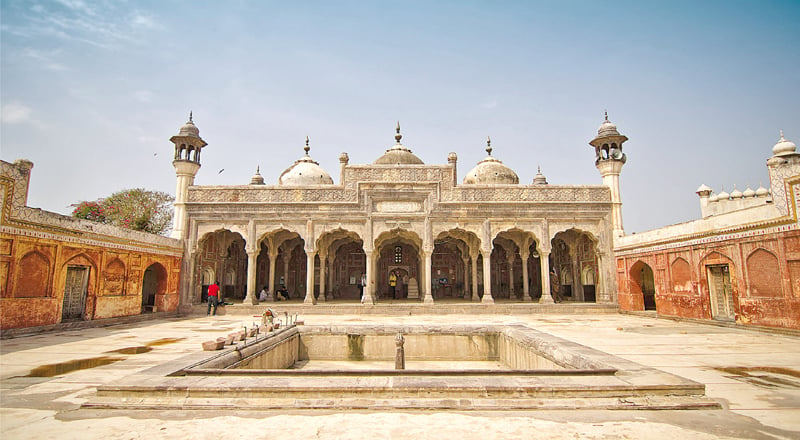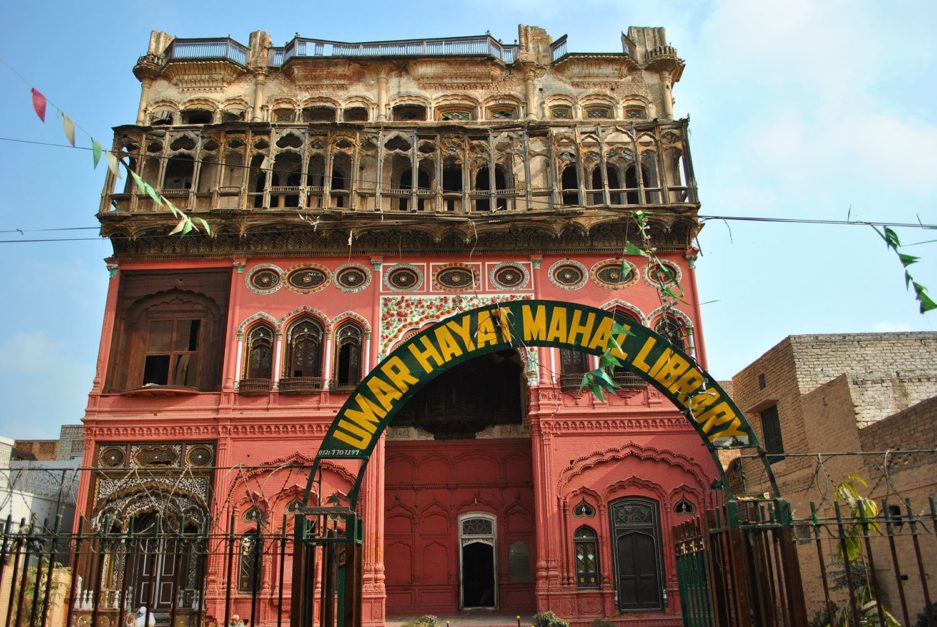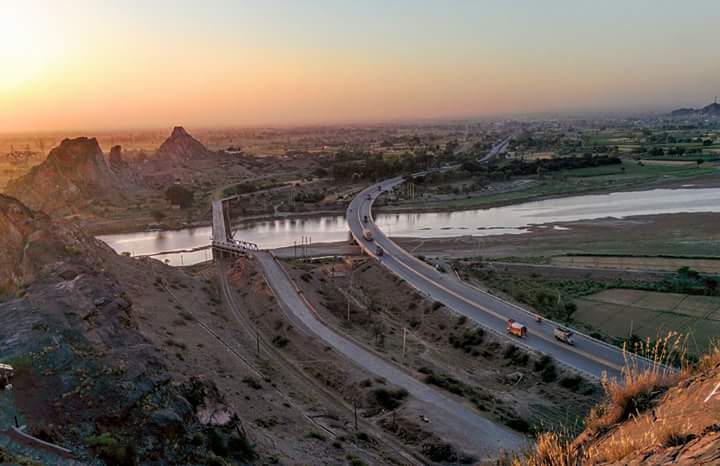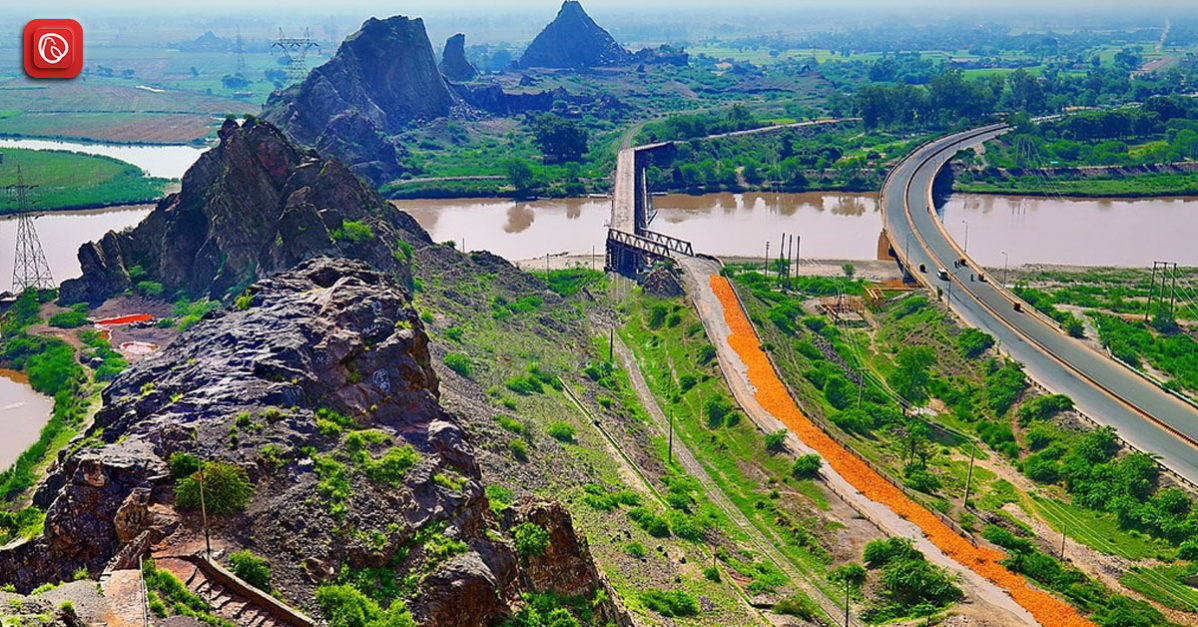Chiniot, situated on the banks of the Chenab River, is an administrative centre of Chiniot District in Punjab, Pakistan. Recognised as the 28th largest city in Pakistan, it is renowned for its exquisite timber furnishings, buildings, and mosques. Notably, it holds the distinction of being the birthplace of Nawab Saad Ullah Khan Thaheem, who rose to prominence as the Prime Minister of the Sub-Continent.
Graana.com has discussed everything you need to know about Chiniot, including location, topography, economy and more.
Location
Chiniot is located where the Lahore-Jhang and Faisalabad-Sargodha routes converge. It is 38 kilometres north of Faisalabad and 158 miles northwest of Lahore. Chiniot City is 10 square kilometres in size and has an average elevation of 179 metres (587 feet).
Topography
Chiniot City is present on a tiny rocky hill on the Chenab River’s left bank. A large portion of the surrounding region is made up of alluvial plains with rocky outcroppings of sandstone and slate that can reach heights of 400 feet near Chiniot.
History
The precise origins of Chiniot remain shrouded in mystery, with historical records offering little clarity on its founding. Many accounts suggest that the city traces its roots to an ancient king’s daughter named Chandan, who, captivated by the enchanting surroundings during a hunting expedition, commissioned the establishment of the settlement known as Chandaniot, alternatively spelt Chandniot, in her honour. Over time, the name evolved into Chiniot, though references to the older name persisted at least until the 1860s.
During the Mughal era, Chiniot was governed as part of Lahore’s province. It flourished under the reign of Mughal Emperor Shah Jahan, particularly during the tenure of Nawab Saadullah Khan from the Thaheem tribe, who served as governor between 1640 and 1656.
Saadullah Khan oversaw the construction of Chiniot’s iconic Shahi Mosque during his governance. The city’s artisans gained widespread acclaim for their craftsmanship during the Mughal era, contributing their expertise to notable architectural projects such as the Taj Mahal and Lahore’s Wazir Khan Mosque.
Economy
China produces a wide range of key goods, such as silk, cotton, wheat, sugar, rice, milk, pottery, and wooden furniture. During the British administration, when a massive network of canals was created to irrigate Punjab, “canal colonies” were established, from which the city’s agricultural economy drew its majority.
With its proximity to the Chenab River, Chiniot became a hub for woodworking and became well-known for its wooden furniture. Sheesham Wood from Kashmir was floated down the river and into the Chiniot District. Renowned for their exceptional craftsmanship, Chiniot artisans worked on the Taj Mahal and Wazir Khan Mosque projects.
During the British era, the city’s and Lahore’s metalworkers were regarded as the best in Punjab, and Chinioti designs were thought to be superior to those of Hoshiarpur or Jalandhar. Ramzan Sugar Mills is also located in Chiniot on Faisalabad Road.
Communication and Transport
Chiniot has a link to the rest of Pakistan via a major rail route and roadway. Faisalabad International Airport, located 48.5 km (30.1 mi) away from Chiniot, is the closest international airport.
Culture
People celebrate Islamic holidays in Chiniot with tremendous fanfare. One of the biggest cakes in the world, measuring 63 metres, was arranged by the residents of Chiniot to commemorate the Islamic Prophet Muhammad’s 1440th birthday on March 12, Rabi’ al-awwal.
Furniture from Chiniot is well-known. For generations, Chinioti artists have carved geometric designs and flowers onto cellulose fibres. It is believed that Chiniot masons worked on the Taj Mahal and Golden Temple construction projects.
In Chiniot, cricket is the most popular sport. Here, people also play football. Hockey, volleyball, basketball, badminton, tennis, kabaddi, and horse racing are among the other well-liked sports.
Population
There are 278,747 people living in the city, according to the Pakistani Census of 2017. The most common language here is Punjabi.
Tribes
During the Indus Valley Civilization, the land of Chiniot was forested and used for agriculture. A multi-tribal nation includes the district of Chiniot.
Among the Chiniot tribes are the Rajput Dudhi Sahmal. Sipra, Janjua, Dogar, Syed, Sial, Mufti, Arain, Laali, Marath, Aheer, Awan, Makhdoom, Baloch, Bhatti, Bhutta, Butt, Bhowana, Chohan, Dhera, Durrani, Gujjar, Hanjra, Indra, Sipra, Walara, Haral, Tamimi, Hashmi, Jappa, Jatt, Koli, Kamoky, Kharal, Khokhar, Marral, Naul, Nakokara, Traggar / Tragar, Nissowana, Puri, Pathan, Slara, Wassi, Dhawan, Wadhawan, Sehgal, and Kalyar.
Places You Must Visit in Chiniot
Travellers can enjoy the wide variety of attractions that Chiniot has to offer.
Shahi Mosque

The Shahi Mosque, Chiniot’s crown treasure, is a masterwork of Mughal architecture. This magnificent mosque, which dates to the 17th century, has exquisite marble work, elaborate calligraphy, and breathtaking murals that cover its walls and domes. Enter this spiritual haven to feel incredibly at ease and to be in awe of the exquisite craftsmanship.
Chenab River

You must experience Chenab River’s captivating beauty on any trip to Chiniot. Enjoy a peaceful stroll along its banks, go on a boat trip, or just soak in the peace of this famous river that runs through the city.
Umer Hayat Mahal

Get ready to be fascinated by the splendour of the Umer Hayat Mahal, an amazing mansion that combines Islamic and European architectural elements. Built in the early 1900s, this sumptuous palace captures the extravagant way of life of the local nobility. Take a stroll around its opulent rooms and lovely gardens to experience a bygone period of regal splendour.
Woodwork and Craftsmanship Shops
Chiniot is famous for its talented artisans and woodworkers. Take a tour of the busy Craftsmanship and Woodwork market, where you can see skilled artisans painstakingly creating elaborate furniture and décor. Bring home a one-of-a-kind work of Chiniot’s artistic legacy as a classic souvenir of your trip.
Rabwah Waterfall

The Rabwah Waterfall is a hidden treasure that is just waiting to be found, tucked away amid gorgeous scenery. This location, which is surrounded by thick vegetation and the sound of cascading water, is the ideal getaway for both nature lovers and photographers.
Conclusion
Chiniot offers visitors a journey they won’t soon forget because of its historical grandeur and captivating attractions. Chiniot offers the ideal fusion of natural beauty and cultural legacy, from the dynamic Craftsmanship and Woodwork shops to the breathtaking Umer Hayat Mahal and Shahi Mosque.
Frequently Asked Questions (FAQs)
Following are the most common questions and their answers for Chiniot.
What is Chiniot famous for?
Chiniot is famous for its exquisite woodwork and furniture craftsmanship, earning it the title of “City of Furniture.” Its intricate designs and skilled artisans have garnered international acclaim.
How can I travel to Chiniot?
Chiniot is accessible by road from major cities like Lahore, Islamabad, and Faisalabad. You can also reach Chiniot by train or bus. The nearest airport is in Faisalabad, approximately 70 kilometres away.
What are the popular tourist attractions in Chiniot?
Some notable attractions include the Shah Burhan Shrine, Chenab River, Chiniot Fort, and the traditional wooden bazaars where you can witness craftsmen at work. The intricate architecture and historical significance make these sites worth visiting.
Is Chiniot safe for tourists?
Chiniot is generally safe for tourists. Like any other city, it’s advisable to take normal precautions such as keeping an eye on your belongings and avoiding secluded areas, especially at night.
What are the local delicacies I should try in Chiniot?
Chinioti cuisine offers a variety of delicious dishes such as Chinioti Pulao, Seekh Kebabs, and Sajji. Don’t miss out on trying traditional sweets like Sohan Halwa and Pateesa.
Are there any accommodations available in Chiniot?
Yes, there are several hotels and guesthouses in Chiniot that cater to varying budgets. From budget-friendly options to more luxurious accommodations, you can find suitable places to stay during your visit.
Can I shop for wooden furniture in Chiniot?
Absolutely! Chiniot is famous for its high-quality wooden furniture. You can explore the local markets and shops to find intricately carved furniture pieces, handicrafts, and decorative items.
What is the best time to visit Chiniot?
The best time to visit Chiniot is during the winter season, from November to February when the weather is pleasant and comfortable for exploring the city and its attractions.
Does Chiniot have any historical significance?
Yes, Chiniot has a rich historical heritage. The city has been inhabited for centuries and has witnessed the rule of various dynasties, contributing to its diverse cultural and architectural heritage.
Can I witness woodwork artisans at work in Chiniot?
Absolutely! Chiniot is home to numerous skilled artisans who practise the art of woodwork passed down through generations. You can visit workshops and observe craftsmen meticulously carving intricate designs on wood, keeping alive centuries-old traditions.
For more related information, visit Graana Blog.




